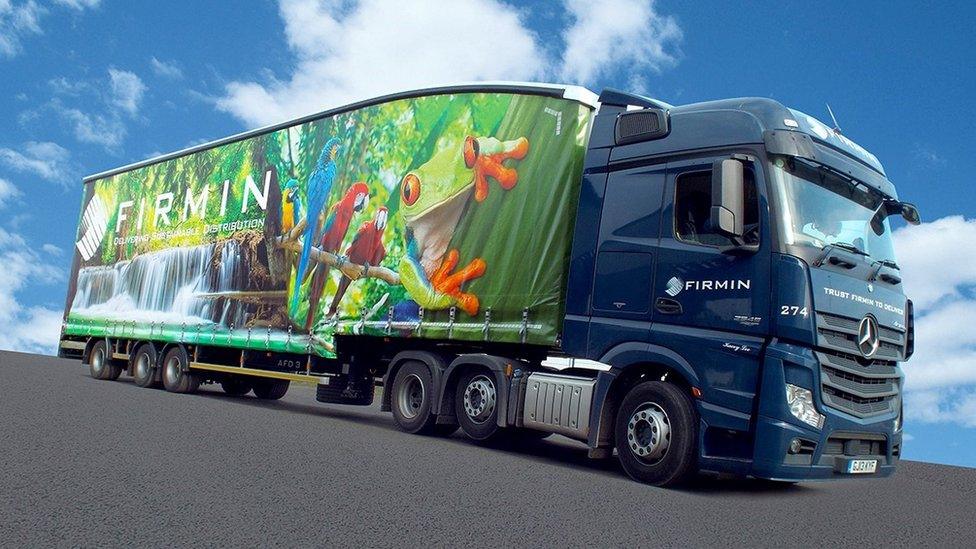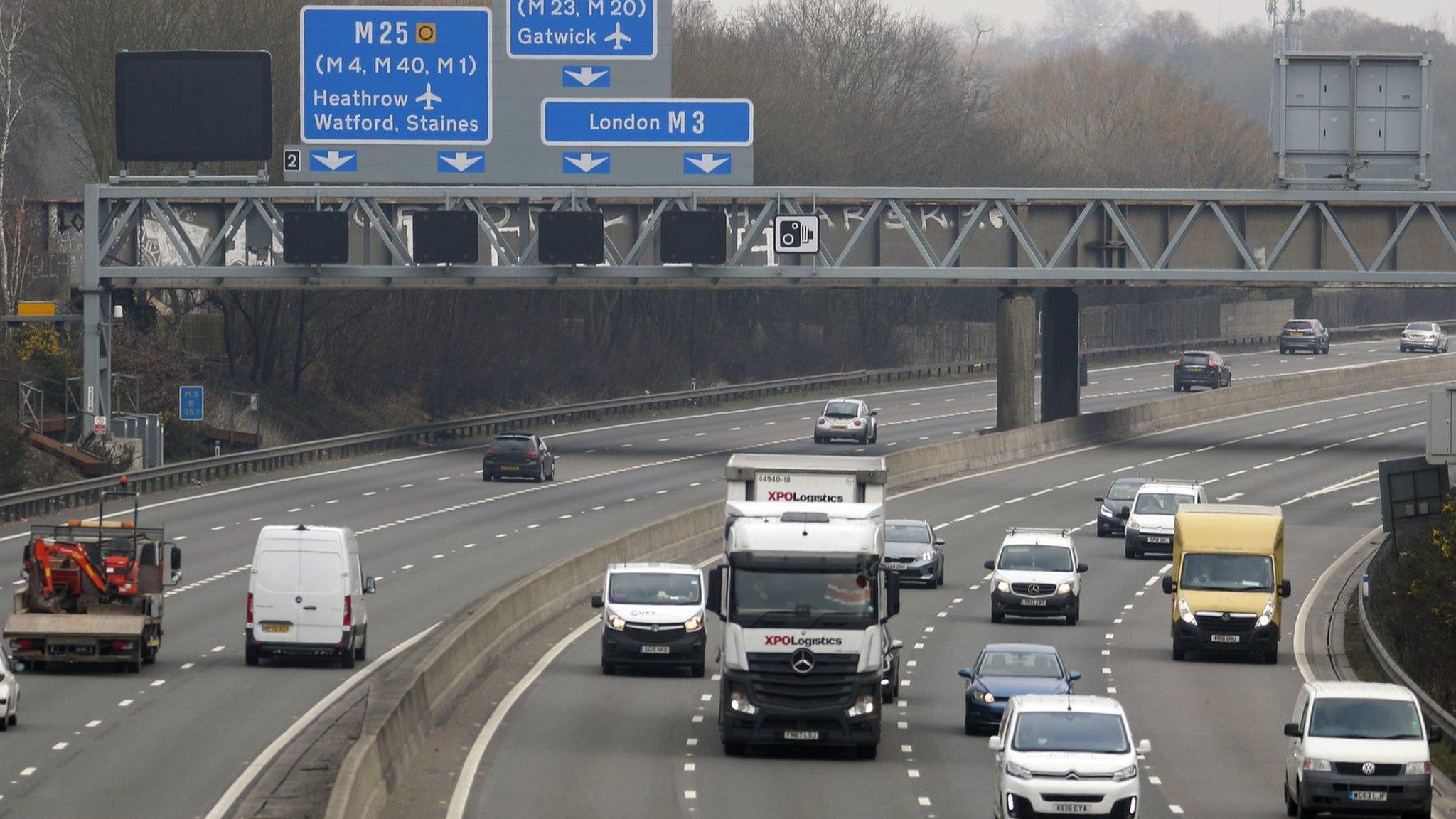Longer lorries to be allowed on Britain's roads
- Published
- comments

The government has approved the use of longer lorries on British roads, saying it will make businesses more efficient and cut emissions.
The industry welcome the move, saying it would mean more goods could be transported by fewer vehicles.
One campaign group warned the larger tail swing, meaning their rear end covers a bigger area when turning could put pedestrians and cyclists at risk.
Ministers said the lorries, which have been trialled since 2011, are safe.
There are already around 3,000 such lorries in use. They are 18.55m long - which is about 2.05m longer than the standard size.
However, from 31 May any business in England, Scotland and Wales will be permitted to use them.
The Department for Transport (DfT) said the vehicles would help businesses be more productive. For example, bakery chain Greggs - which has used the vehicles since 2013 - says it can carry 15% more goods than usual in a longer trailer.
The move is set to result in £1.4bn of economic benefits and take one standard-size trailer off the road for every 12 trips, the government said.
It estimates the vehicles will save 70,000 tonnes of carbon dioxide from being released into the atmosphere over 11 years.
The DfT also said the vehicles had been involved in "around 61% fewer personal injury collisions than conventional lorries".
'Trains more efficient'
However, the Campaign for Better Transport said the change was was a "deeply retrograde step" which will "do nothing to tackle carbon emissions or air pollution".
Spokesman Norman Baker added that the bigger "tail swing" of the lorries presented a "danger to other road users and pedestrians".
He added: "Rather than longer lorries, the government should be working to ensure more freight is moved by rail - an efficient, safe and clean alternative with just one freight train capable of removing up to 129 lorries from our roads."
A government-commissioned report published in July 2021 revealed that 58 people were injured in incidents involving longer lorries between 2012 and 2020.
Under the new rules, operators will be legally required to carry out risk assessments and ensure they take appropriate routes.
The longer lorries will still have the same 44-tonne weight limit as those using standard trailers.
However, a spokesman for the Road Haulage Association urged the government to go further by increasing the permitted weight to 48 tonnes.
"This will be increasingly important when we roll out zero-emission trucks to compensate for the increased weight from batteries," he said.
Related topics
- Published16 April 2023

- Published5 January 2023
